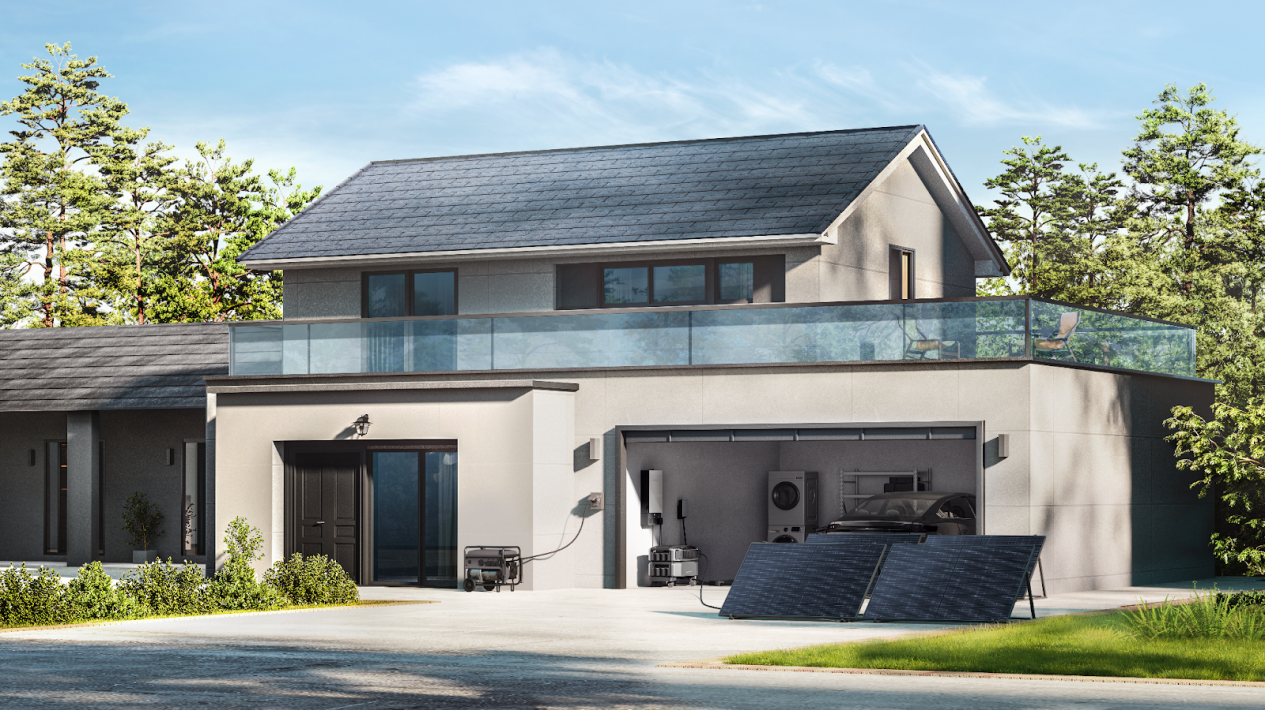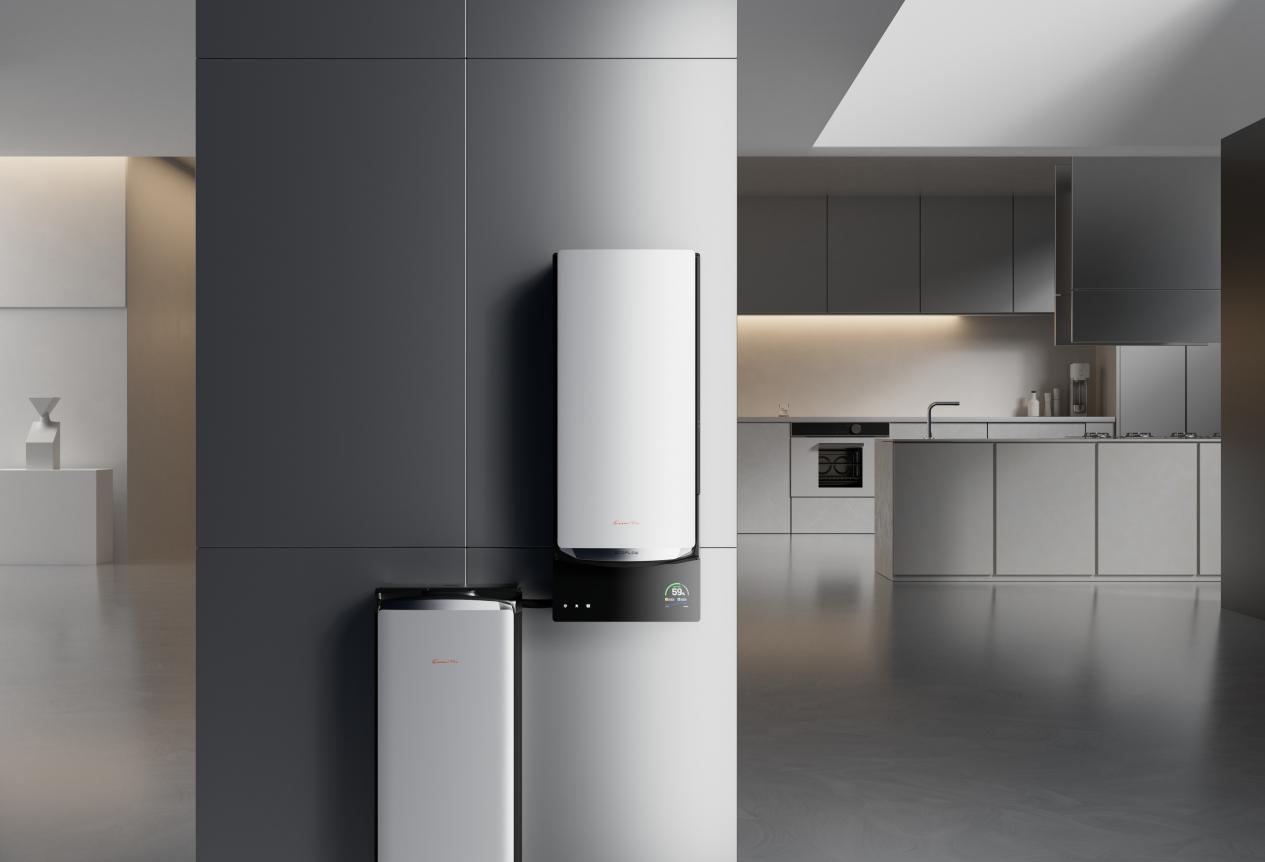How to Understand a Home Battery Backup as a Beginner
- Units of Power: How Much Can Your Battery Handle at Once?
- Units of Energy (kWh): How Much Can You Store?
- Durability & Environmental Protection: Can It Survive Harsh Places?
- Safety Features: What If Something Goes Wrong?
- Smart Features & Ecosystem Integration
- Design: Will It Fit Your Home?
- Installation: Leave It to the Experts
- 7 Tips on Using Your First Home Battery Backup as a Beginner
- Big Power, Full Freedom
- FAQs About Home Battery Backup
Some people want true energy freedom. They want to stop relying on the power grid. For that dream, a strong battery backup is not optional. It is required. This guide is for people like you—those who need a large home battery system and want to understand how it works before buying.
Units of Power: How Much Can Your Battery Handle at Once?
Power means the speed of electricity use or supply. It is not the same as storage. Units of power are measured in watts (W), kilowatts (kW), or megawatts (MW). These numbers show how much power your system can push out or take in at one time.
With a large home battery, you need strong output. You also need strong input if you want fast solar charging. Let’s look at the EcoFlow OCEAN Pro system as a real-world example.
Continuous Output Power. The OCEAN Pro inverter can deliver 24kW of power nonstop. This is enough for heavy appliances like electric ovens, central air, or large water pumps. You can run many items at once without worrying about overload.
Peak Power. Some devices need a short power boost at startup. The OCEAN Pro handles 50kW peak power. This short burst helps start motors or compressors without failure.
LRA (Locked Rotor Amps). LRA shows how well the system handles startup current. The OCEAN Pro supports 205A, which means it can start big motors like HVAC systems.
Maximum PV Input. The OCEAN Pro can take in 40kW of solar power. That means it supports large solar panel setups. It can store energy from a big roof array during the day.
These numbers are your system’s power capacity. Think of them as the “speed limit” for energy flow.
Units of Energy (kWh): How Much Can You Store?
Energy is measured in kilowatt-hours (kWh). This number tells you how much electricity your battery holds in total. With EcoFlow OCEAN Pro, each battery module stores 10kWh. You can stack up to 8 units. That gives you 80kWh of energy. This is enough to power a full home for several days, depending on what you use. A family that uses 30kWh daily can survive off-grid for about 2–3 days with 80kWh of storage.
If you plan to live fully off-grid, focus on both units of energy (kWh) and units of power (kW). You need both to stay self-powered day and night.
Durability & Environmental Protection: Can It Survive Harsh Places?
Large battery systems often live outdoors or in garages. Heat, water, dust, and debris are real threats. The OCEAN Pro battery is built for these tough spots. Here’s why it holds up:
IP67 rating: Fully dust-proof and resistant to water up to 3.3 feet deep.
Heat protection: Works in heat up to 140°F, great for hot areas.
Heavy-duty casing: Built with strong materials to resist damage.
In flood zones, deserts, or hot climates, these features protect your investment. They also keep your energy stable when the weather gets extreme.


Safety Features: What If Something Goes Wrong?
High-capacity batteries hold a lot of energy. Without safety systems, they can pose risks. That is why modern batteries include built-in protections. The OCEAN Pro system includes:
- Fire suppression: A built-in module can stop flames during critical events.
- Explosion-proof valve: Releases pressure safely if needed.
- Smart shutdown: Stops dangerous operation before damage happens.
These features matter for people who store batteries inside homes or garages. Safety is not optional at this scale.
Smart Features & Ecosystem Integration
EcoFlow OCEAN Pro is not just a box that holds power. It is a smart system. The inverter comes with software powered by AI tools, like ChatGPT, to help manage your energy. Here’s what that means:
You get smart notifications on your phone.
You can see your power use in real time.
The system can adjust power use automatically to save money.
You can even sell extra power to the grid with Virtual Power Plant (VPP) support.
If your home uses smart thermostats, EV chargers, or solar trackers, this system can work with them. It fits into the bigger picture of a modern energy-smart home.
Design: Will It Fit Your Home?
Not all batteries look the same. Some systems are bulky or industrial-looking. EcoFlow gives you more choices. You can pick the look that matches your space:
- Aluminum finish: Industrial and strong
- Walnut wood: Warm and classic
- Carbon fiber: Modern and sporty
You also get NFC backlit panels, which add visual feedback and style. These design options let you install the system in visible areas without ruining your home's look.
Installation: Leave It to the Experts
Large home battery systems need skilled hands.You must work with a certified installer. EcoFlow has local partners who know how to install the OCEAN Pro safely. They also handle system design, wiring, and connection to your solar panels or generator. Check out the top benefits of using an EcoFlow-certified installer:
Faster setup time
Local service and quick support
Clear project steps from design to final testing
Less system clutter
Trying to install it alone could break warranties or cause danger. Let professionals do the job.
7 Tips on Using Your First Home Battery Backup as a Beginner
A home battery system gives strong backup power, but it only works well when used with care. As a beginner, you don’t need to know everything right away. You only need a few clear habits to use your system with confidence.
Know Your Daily Energy Use. Start with real numbers. Look at your electric bills for the past 3–6 months. Find the highest usage day. That number tells you how much energy your battery should cover in an emergency. If your daily use is around 30kWh, you may want to start with 40–50kWh of storage to stay comfortable.
Plan for Both Day and Night. Solar panels only produce power during the day. At night, your battery takes over. Always size your battery to support full overnight use, especially if you cook, heat, or run devices after sunset. You don’t want to run out of stored power before the sun comes up.
Prioritize Your Loads. List the devices that must stay on no matter what. These are your “essential loads.” Common examples include your fridge, lights, internet router, and medical equipment. During outages, your system will direct stored energy to these items first. Ask your installer to create a separate power line for them.
Don’t Oversize at the Start. The OCEAN Pro system allows step-by-step growth. If your home only needs 30kWh now, don’t install 80kWh right away. Use what you need today. Add more storage later as your needs change. This saves cost and avoids wasting unused capacity.
Check Weather and Charge Early. Before storms, heatwaves, or cloudy days, charge your system early. Keep the battery above 80% when bad weather is expected. If you use solar, start charging in the morning when sunlight is stronger. Do not wait until late afternoon.
Use the Energy Dashboard Daily. The system dashboard shows what devices use the most power. Open the app once a day. Look for patterns. If something drains power at night, adjust its use time. These small steps can help your battery last longer during outages.
Ask Your Installer for Custom Settings. Some people want the system to run everything automatically. Others want to control what runs and when. Talk to your installer about what fits your lifestyle. A good installer can set up smart rules, like “turn off EV charging during cloudy days” or “save 30% power for emergencies.”


Big Power, Full Freedom
Large home batteries give real energy freedom. You must learn about units of power, energy storage, and how to choose smart, safe systems. With the right setup, you can stay off-grid for days or even forever.
Ready to start your path to energy independence? Learn more about EcoFlow OCEAN Pro at the official site and get expert help from local installers.
FAQs About Home Battery Backup
Q1: What happens if my battery reaches 0% during an outage?
A: If your battery runs out of power, your home will go dark unless you have another backup like a generator. To avoid this, keep an eye on your battery level and avoid using high-energy devices at night unless needed. Some systems allow a safety reserve (e.g., 10%) to keep essential devices running a little longer.
Q2: Can I stay off-grid during winter or long cloudy periods?
A: Yes, but only if your battery is large enough and your solar input stays strong. During winter, solar panels may produce much less power. In that case, you may need to combine your battery with a generator or add extra solar panels. Always plan your system based on your local climate and worst-case sun exposure.
Q3: How often should I check or maintain my battery system?
A: Most home battery systems require very little maintenance. You should check the system once a week through the app or control screen. Look for unusual drops in power or sudden low charge levels. Clean vents and check outdoor units for dust or water buildup every few months.
Q4: Can I move the battery system if I relocate?
A: Large battery systems like the OCEAN Pro are designed for permanent installation. Moving them requires licensed electricians and new permits. If you plan to move soon, consider starting with a smaller portable battery setup before investing in a full system.
Q5: Will my battery still work if the grid voltage is unstable?
A: Yes. Quality inverters like the OCEAN Pro are built to handle grid voltage changes. They can disconnect from the grid instantly and switch to battery power without interruption. This protects sensitive devices like computers or medical machines from sudden shutoffs or power surges.